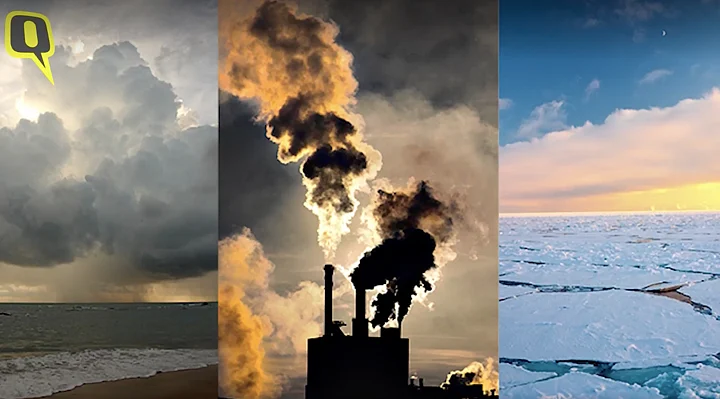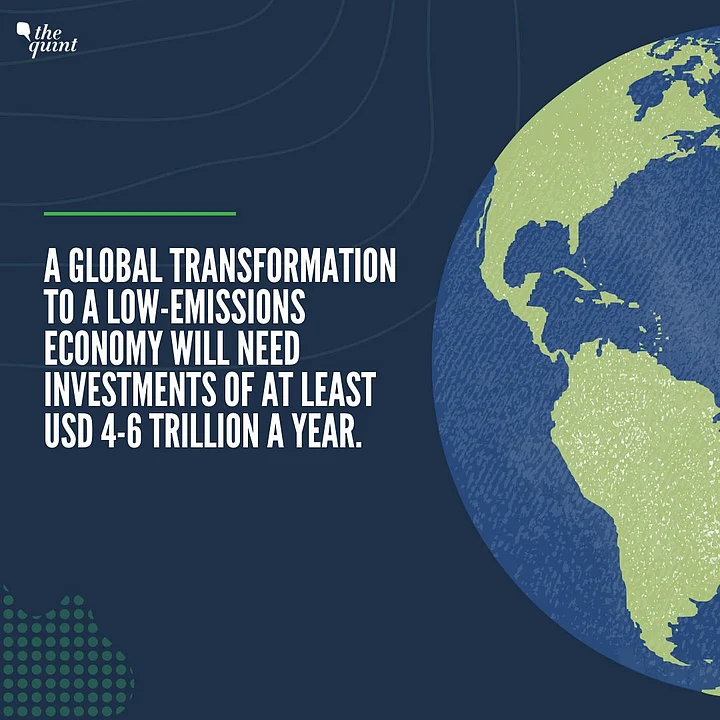Intensified extreme weather events across the world have proven the need for Greenhouse Gases (GHG) emissions to be reduced rapidly. Despite this, the international community is still falling far short of the Paris goals, with no credible pathway to 1.5°C in place, reveals a recent UN report.
The United Nations'-- 'Emissions Gap Report 2022: The Closing Window' is an important report released ahead of the 27th Conference of Parties on Climate Change or COP 27, starting from 6 November 2022 in Egypt.
The report emphasises that urgent sector and system-wide transformations would help deal with future climate disasters. However, a global transformation to a low-emissions economy is expected to require investments of at least USD 4-6 trillion a year.
"This report sounds an alarm on the absolute crisis we face. Climate pledges since the Glasgow COP26 Conference last year have shaved off only 0.5% of projected emissions till 2030 when what we need is emissions slashed by half by this decade."Harjeet Singh, Head of Global Political Strategy, Climate Action Network International
- 01/10

- 02/10

- 03/10

- 04/10

- 05/10

- 06/10

- 07/10

- 08/10

- 09/10

- 10/10

Inadequate Progress on NDCs
Despite a decision by all countries at COP26 to strengthen Nationally Determined Contributions (NDCs), progress has been woefully inadequate
The NDCs submitted this year take only 0.5 gigatonnes of CO2 equivalent, less than 1%, off projected global emissions in 2030
This lack of progress leaves the world hurtling towards a temperature rise far above the Paris Agreement goal of well below 2°C, preferably 1.5°C.
Unconditional NDCs are estimated to give a 66% chance of limiting global warming to about 2.6°C over the century.
For conditional NDCs, those that are dependent on external support, this figure is reduced to 2.4°C.
Current policies alone would lead to a 2.8°C spike, highlighting the temperature implications of the gap between promises and action.
In the best-case scenario, full implementation of unconditional NDCs and additional net- zero emissions commitments point to only a 1.8°C increase.
Unprecedented Cuts Needed
Unconditional and conditional NDCs are estimated to reduce global emissions in 2030 by 5% and 10% respectively
To get on a least-cost pathway to holding global warming to 1.5°C, emissions must fall by 45% over those envisaged under current policies by 2030.
For the 2°C target, a 30% cut is needed.
“It is a tall, and some would say impossible, order to reform the global economy and almost halve greenhouse gas emissions by 2030, but we must try.”Inger Andersen, Executive Director of UNEP
Electricity, Industry, Transport and Buildings
The transformation towards net-zero greenhouse gas emissions in electricity supply, industry, transportation and buildings is underway but needs to move much faster
The pace of change must increase alongside measures to ensure a just
transition and universal energy access
To advance the transformation, all sectors need to avoid lock-in of new fossil fuel-intensive infrastructure, advance zero-carbon technology and apply it, and pursue behavioural changes
"It is time to end the toxic dependency on fossil fuels and for rich countries to pay up their fair-share of finance to enable a just and equitable transition to sustainable energy and food systems.”Harjeet Singh, Head of Global Political Strategy, Climate Action Network International
Food Systems Can Reform to Deliver Rapid and Lasting Emission Cuts
Focus areas for food systems account for about a third of greenhouse gas emissions.
These include:
Protection of natural ecosystems
Demand-side dietary changes
Improvements in food production at the farm level
Decarbonization of food supply chains.
Action in these four areas can reduce projected 2050 food system emissions to around a third of current levels, as opposed to emissions almost doubling if current practices are continued.










